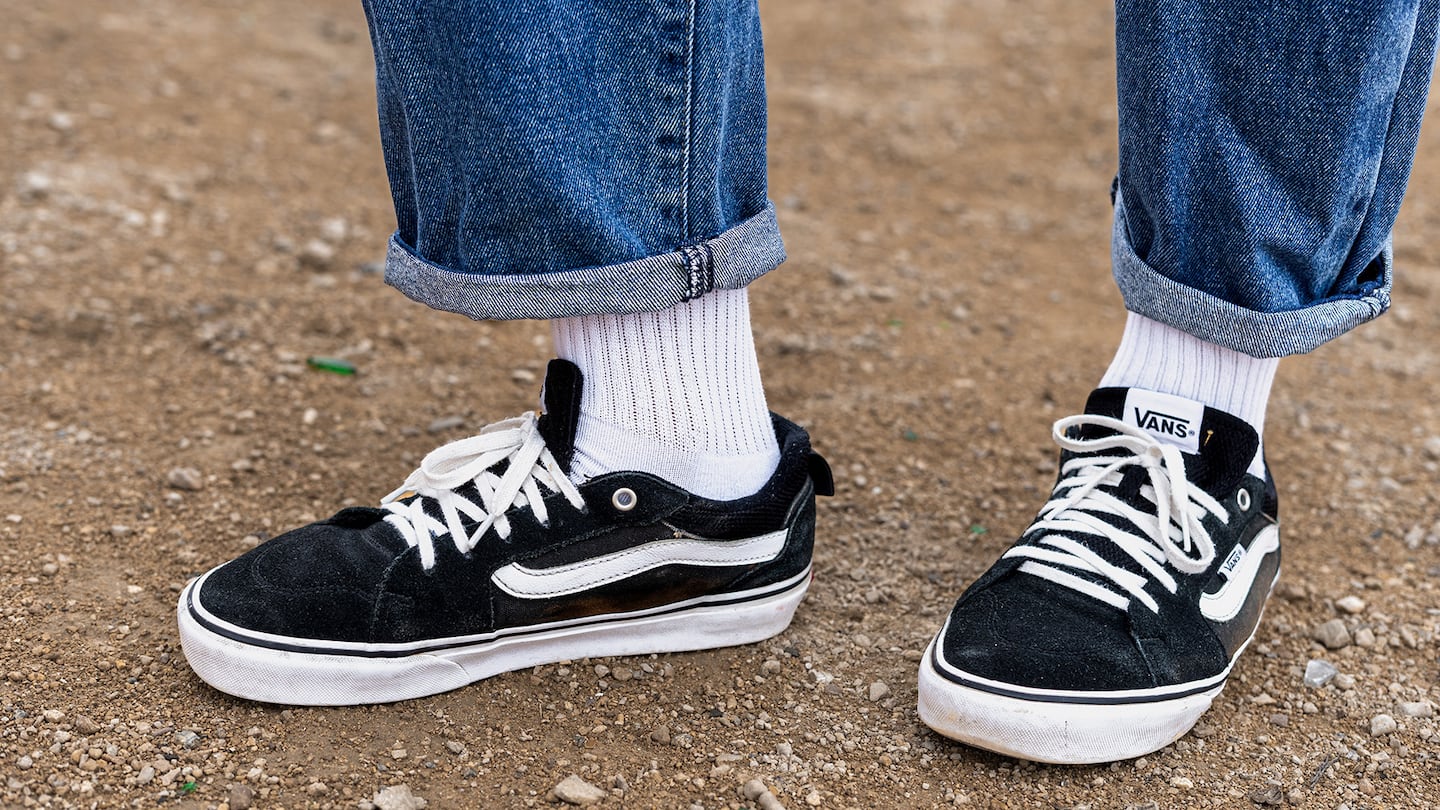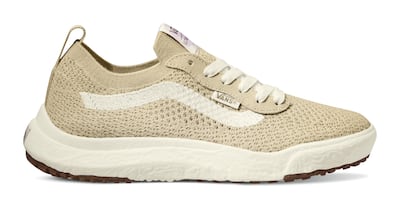
The Business of Fashion
Agenda-setting intelligence, analysis and advice for the global fashion community.

Agenda-setting intelligence, analysis and advice for the global fashion community.

Until recently, Vans sneakers seemed to sell themselves.
The skateboarding shoe brand reported double-digit growth every year between 2004, when VF Corp. acquired the brand for $396 million, and 2019. As soon as the popularity of one of its five signature styles began to slip, another would be elevated to take its place; the era of canvas Slip-Ons seamlessly flowed into the age of Old Skools.
That charmed run came to an abrupt halt during the pandemic. Consumers didn’t want classic silhouettes in new prints anymore. They wanted something that felt genuinely new. Vans canvas sneakers suddenly looked quaint next to brands like Hoka and On, which promised a modern mix of comfort, performance and style. Where Vans sales grew 24 percent in the year ending March 2019, they fell 11 percent in the nine months ending December 2022.
“It was almost like we could do no wrong in the 2017 to 2019 sprint,” said Kevin Bailey, global brands president, Vans. “But we weren’t feeding product innovation. We were dramatically under-funding our product part of the business.”
ADVERTISEMENT
VF Corp. had brought Bailey back to the business in March 2022 in an effort to revitalise Vans, neck and neck with The North Face as the conglomerate’s biggest brand by revenue ($4.2 billion in fiscal 2022). He had served as Vans’ president between 2009 and 2016, when he left to be VF’s president of action sports coalition as well as Vans. Most recently, he was president of emerging brands and the Asia-Pacific region.
For the most part, the plan is a standard one for reviving a fallen brand’s prospects: Exit weak wholesale accounts, reduce the overall assortment of styles and streamline marketing efforts. But the real key to Vans’ future will be introducing new styles relevant to the needs of the consumer today.
“[Vans] are out of style and out of sync with fashion, and they don’t have a new product out there that resonates,” said Janet Kloppenburg, retail analyst behind JJK Research Associates. “But they do have a highly recognised brand name … where they don’t need to spend all this money toward brand awareness.
In hindsight, the signs of trouble were clear well before the pandemic, or the rise of On.
At the peak of Old Skool’s reign as the most coveted Vans style, before the pandemic and 1990s style had just begun to come back, Vans flooded the market with the shoe. To any retailer that wanted to get its hand on it, the company said yes.
“Everyone wanted that shoe and we let them have it,” Bailey said. “We became ubiquitous.”
Going forward, Bailey plans to be judicious with product allocation and sever ties with some stockists. Since 2020, Vans has already closed 1,500 wholesale accounts.
Bailey plans to run Vans as a “vertical retailer,” with some 1,000 of its own stores and e-commerce at the forefront of its merchandising strategy rather than letting wholesale dictate the brand’s future, he said.
ADVERTISEMENT
In recent years, the direct-to-consumer strategy has proven to pay off for larger brands like Nike and Uggs, which scaled back on wholesale to improve their margins and better control how consumers view their brand. For well-known companies, department stores are no longer crucial for brand awareness as they are for younger labels.
To take charge of its brand perception, Vans will overhaul its marketing efforts to focus on fewer but bigger campaigns, reduce the number of overall styles and improve store presentation.
“It became very kind of disorganised the way we showed up as a brand,” Bailey said. “We had too many SKUs, where, if you look at our footwear wall, it’s overwhelming. What story are we trying to tell? Even as an employee I’m looking at our wall, and I’m struggling to find that story.”
Immediately after returning to Vans in March last year, Bailey formed his own team to make these changes. He tapped Vans alum Marissa Pardini from sister brand The North Face to be Vans’ chief product and merchandising officer. He hired Ian Ginoza, a collaborations expert with stints at Nike and Adidas, to lead a new division at Vans called Pinnacle, which will oversee premium products and special concepts.
It became very kind of disorganised the way we showed up as a brand.
Under Pardini, Vans will skim up to 40 percent of its current assortment to present a tighter, more consistent offering. The brand will finally prioritise product development with a new team infrastructure that divides the brand into four categories: skateboarding, lifestyle (including core classics), Pinnacle and outdoor performance, perhaps the most promising development.
Under Ginoza, Vans will also reduce the number of collaborations in which it participates. “Where you’re going to see us lean into is a refined selection [of tie-ups],” said Bailey, pointing to successful recent ones, such as its capsule with indie label Collina Strada, and to some less on-point collaborations, such as a licensing deal with Disney and a recent collection with gummy bear candy maker Haribo.
“I think we’ve maybe confused consumers as to what we’re doing there,” Bailey said.
By far its most ambitious undertaking, the new outdoor performance division — Bailey dubbed it MTE, or made for the elements — will lead Vans’ efforts in bringing to market new shoes, such as its version of a walking sneaker akin to On or trendy trail running brand Salomon. So far, MTE houses a line of hiking and waterproof shoes and will introduce a number of new models geared toward comfort and other technical attributes outside of skateboarding.
ADVERTISEMENT

“Post-Covid, consumers are just doing a lot more outdoor stuff, and Vans need to address that,” said Kloppenburg.
Vans has what many of its newer competitors don’t: decades of brand recognition. Bailey’s ultimate objective is to harness that recognition into a new compelling reason for customers to come back to the brand again.
“The problem is, [our customers] are not buying frequently,” he said. “[Our customers] might want to buy a more fashion-forward shoe or an athletic shoe that’s in style at the moment, and we’re not bringing them that type of newness and excitement.”
Post-Covid, consumers are just doing a lot more outdoor stuff, and Vans need to address that.
But soon, it will. New products under the MTE division are already available in stores, and more will hit shelves this fall. A smaller overall assortment will be reflected in the fall collection.
“The return to growth will be back half of the year, but the first half will still be tough,” Bailey added.
In a deal that values the New York streetwear brand at $2.1 billion, Supreme picks up a long-term partner with back-end prowess and ambitions to scale it past $1 billion in annual sales.
The skate shoe brand is 15 years into a sales boom and competes head to head with Nike and Adidas. Now parent company, VF Corp., is betting the same formula can help it transform from a collection of musty department-store labels into a retail empire.
After years of flat sales, the VF Corp.-owned shoemaker is looking to clarify its sometimes muddled image with consumers. On deck: product innovation, buzzy collaborations and more apparel.

Cathaleen Chen is Retail Correspondent at The Business of Fashion. She is based in New York and drives BoF’s coverage of the retail and direct-to-consumer sectors.
The company, under siege from Arkhouse Management Co. and Brigade Capital Management, doesn’t need the activists when it can be its own, writes Andrea Felsted.
As the German sportswear giant taps surging demand for its Samba and Gazelle sneakers, it’s also taking steps to spread its bets ahead of peak interest.
A profitable, multi-trillion dollar fashion industry populated with brands that generate minimal economic and environmental waste is within our reach, argues Lawrence Lenihan.
RFID technology has made self-checkout far more efficient than traditional scanning kiosks at retailers like Zara and Uniqlo, but the industry at large hesitates to fully embrace the innovation over concerns of theft and customer engagement.